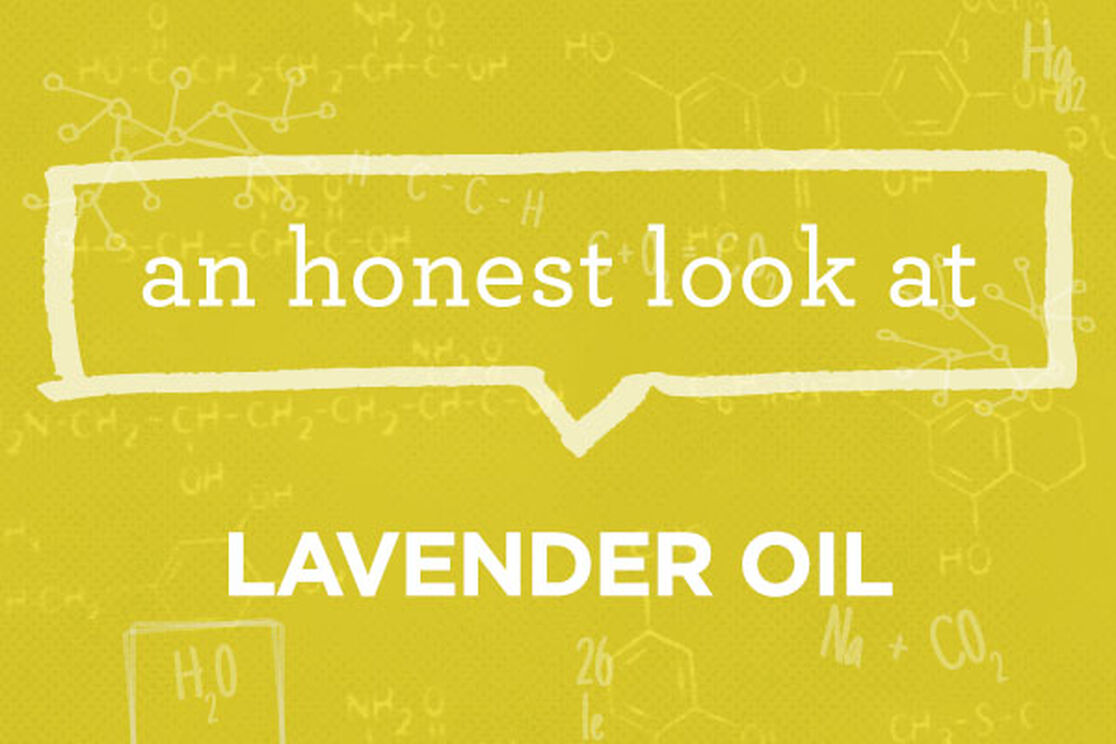This is part of our ongoing series helping consumers better understand chemicals, chemistry, and product formulations. We translate the science, bust the myths, and give you an honest assessment, so you can make informed choices for your family!
Ingredient:
Lavandula Angustifolia (Lavender) Oil
What it is:
Lavandula Angustifolia is a fragrant flowering shrub native to the western Mediterranean. The oil comes from distillation of the flower heads. Distillation is simply boiling the plant material, capturing the steam and oil, and then separating the steam and oil. It’s a process that’s been used to retrieve essential oils for thousands of years (1).
What it does:
Lavender oil is one of the most versatile and well-known essentials oils and it’s been used for eons – often for its delicate scent. In fact, the ancient Egyptians used it in perfume and incense, and the ancient Greeks and Romans used it in their baths (2,3). While this oil has been used for cosmetic and therapeutic purposes for ages, only recently have scientists begun to study its potential beneficial uses. One of the most promising findings is that the smell of lavender oil can help people relax (4-6).
Why we use it:
We love ingredients that come from nature and take little processing to become a functional raw material. In the case of lavender oil, it also has a very long history of safe use – plus, people love its scent! We chose to use it some of our products to help our customers and their kiddos feel calm and relaxed. We can all use a little more of that!
References:
- National Association for Holistic Aromatherapy. (n.d.). Retrieved December 21, 2015, from https://www.naha.org/explore-aromatherapy/about-aromatherapy/how-are-essential-oils-extracted/
- Lavender: History, Taxonomy, and Production. (n.d.). Retrieved December 21, 2015, from https://www.ces.ncsu.edu/fletcher/programs/herbs/crops/culinary/lavender_mccoy.html
- Lavender. (n.d.). Retrieved December 21, 2015, from https://nccih.nih.gov/health/lavender/ataglance.htm
- Cavanagh, H. M. A., & Wilkinson, J. M. (2002). Biological activities of lavender essential oil. Phytotherapy Research, 16(4), 301-308.
- Cavanagh, H. M., & Wilkinson, J. M. (2005). Lavender essential oil: a review.Healthcare Infection, 10(1), 35-37.
- MPham, W. S., & Siripornpanich, V. (2012). The effects of lavender oil inhalation on emotional states, autonomic nervous system, and brain electrical activity. J Med Assoc Thai, 95(4), 598-606.
We aim to provide you with the most honest and credible information possible. This article was reviewed for accuracy by The Honest Team and was written based on sources that are linked at the bottom of the article.
blog_review_statement



